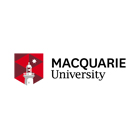Master of Applied Statistics (1 year)
Master of Applied Statistics (1 year)
Summary According to the latest estimates, nearly 330 million terabytes of data is created each day. And over the next few years, global data creation is projected to grow to more than 180 zettabytes. Those with expert knowledge and skills that go beyond number-crunching – those who can create actionable…
Categories
COURSE DESCRIPTION
Summary
According to the latest estimates, nearly 330 million terabytes of data is created each day. And over the next few years, global data creation is projected to grow to more than 180 zettabytes. Those with expert knowledge and skills that go beyond number-crunching – those who can create actionable insights based on evidence and effectively turn data into knowledge – will find themselves sought after across a diverse range of industries.
The Master of Applied Statistics – recently redesigned with industry partners to better reflect employability outcomes – is the only degree of its kind in Sydney. While other postgraduate statistic degrees are largely theoretical, this degree is fully applied, meaning you’ll not only learn how to obtain data, but also clean and analyse it, and then communicate your recommendations to those from both technical and non-technical backgrounds. You’ll also have the opportunity to augment your classroom learning by completing an independent research project that’s unique to this degree.
Key features
Investigate the entire statistics lifecycle
Learn how to generate, collect, process, store, manage, analyse, visualise and interpret data. Undertake the only degree of its kind in Sydney
Study the only genuinely applied statistics degree and the only one that accepts students from a non-quantitative background. Boost your knowledge of advanced areas of statistics
Study biostatistics, data mining, epidemiological methods, generalised linear models, time series and stochastic finance. Complete an individual end-to-end research project
Review an advanced area of statistical methodology and then apply statistical methods and techniques to answer a research question.
Career Outcomes
Professions
Academic
Biostatistician
Business or venture analyst
Computer systems analyst
Corporate finance analyst
Data analyst
Data visualisation analyst
Financial adviser or analyst
Insurance analyst
Market analyst
Operations analyst
Quality analyst
Quantitative analyst
Risk analyst
Statistical modeller
Statistician
Employers
Australian Bureau of Statistics
Banks and financial institutions
Business analysis firms
Consulting firms
Government agencies and departments
Healthcare agencies
Hospitals
Insurance firms
Market research firms
Medical companies
Pharmaceutical companies
Research institutes
Sport and recreation organisations
Statistical analysis companies
Technology and software development companies
EDUCATIONAL INSTITUTION
Ranked in the top 200 universities in the world, Macquarie University is considered one of Australia’s best universities, producing graduates that are among the most sought-after professionals in the world (ranked #1 in Sydney for graduate employment rate, QS Graduate Employability Rankings, 2022). Uniquely located in the heart of Sydney, Australia’s largest high-tech precinct, Macquarie brings together more than 45,000 students and 3000 staff in one thriving hub of discovery. Our campus spans 126 hectares, with open green space that gives our community the freedom to think and grow. We have recently invested more than one billion dollars in our facilities and infrastructure so our students and staff can thrive on a campus that is dynamic, sustainable, and built for collaboration. Students from over 120 countries are warmly welcomed into the Macquarie community and benefit from special ongoing academic, language and wellbeing support throughout their study. Macquarie has one of the most generous scholarship programs in Australia, providing many opportunities each year for international students to undertake studies here.




